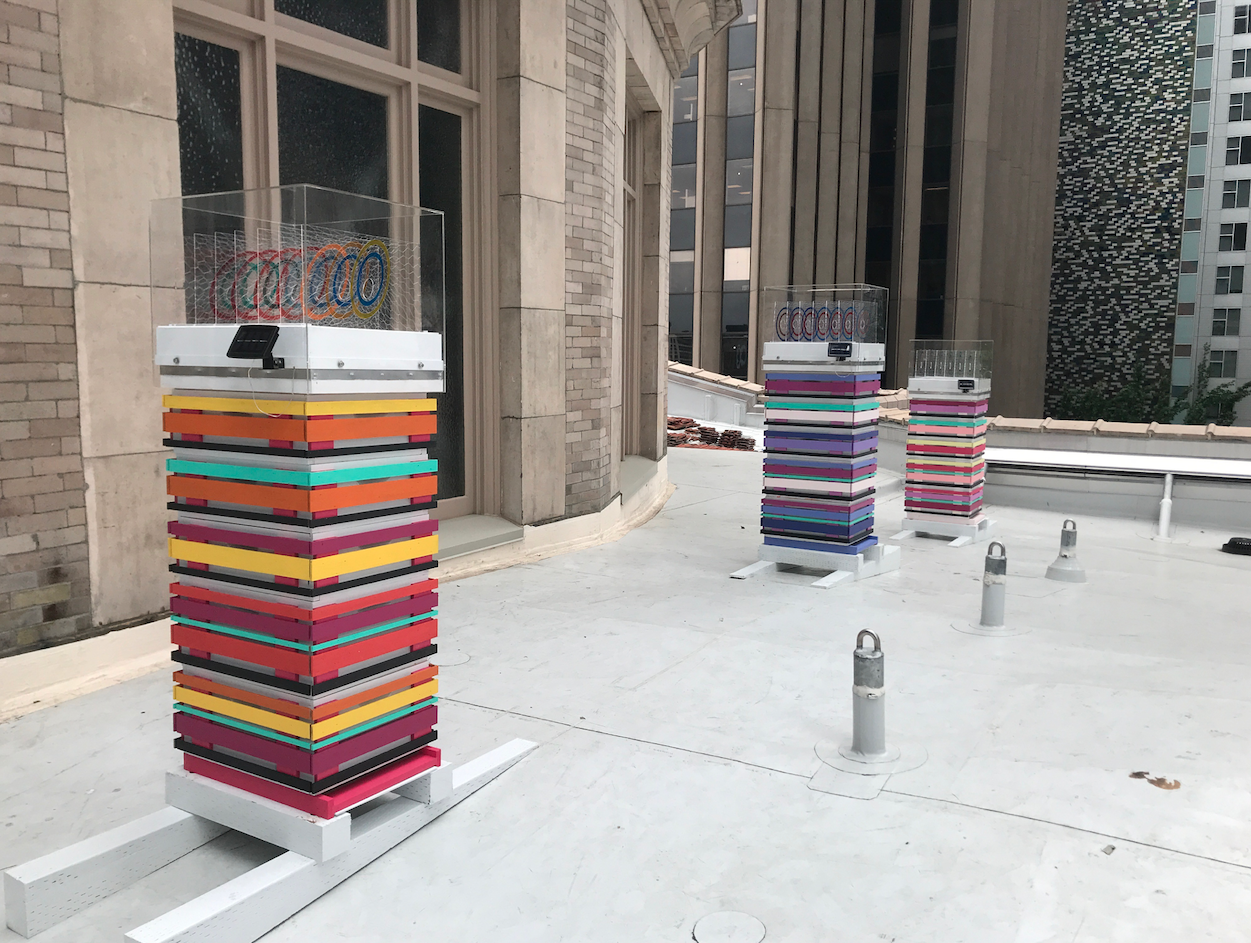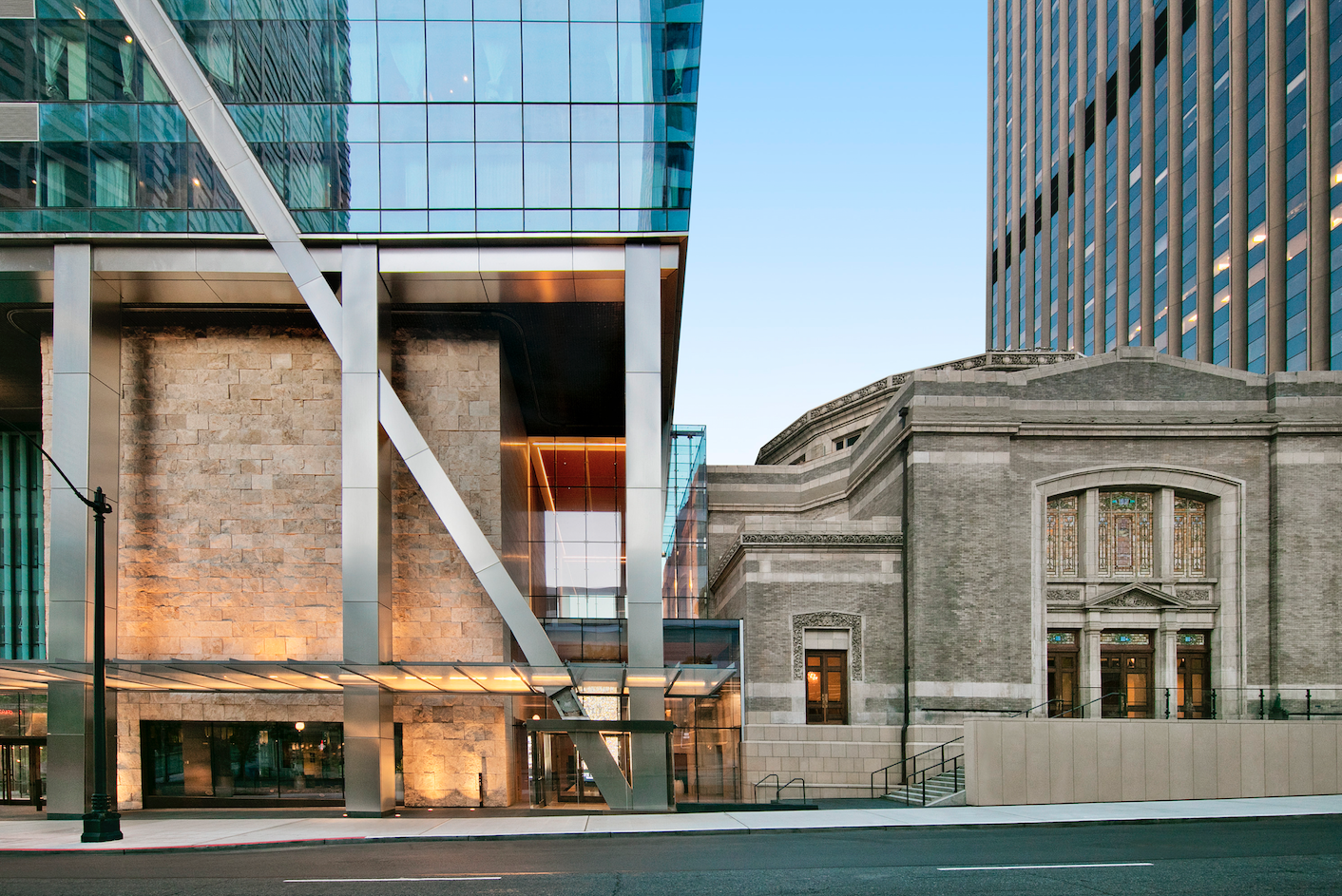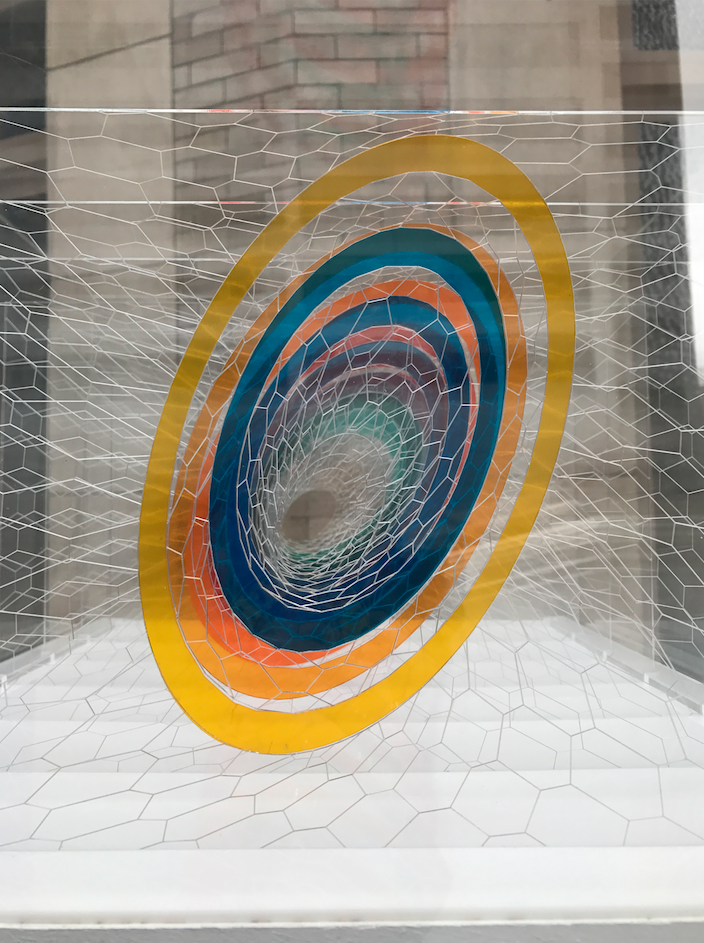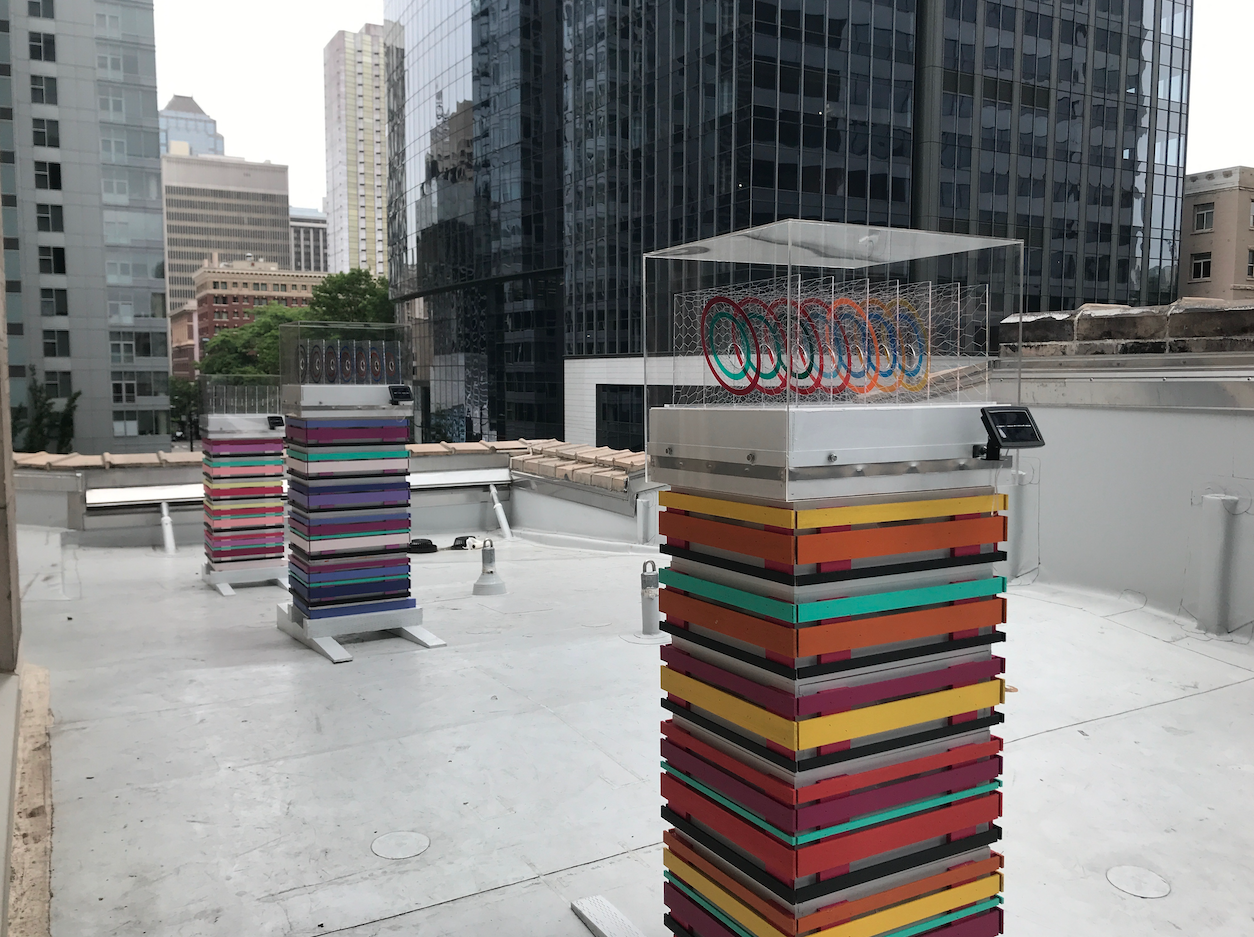Though construction has completed at The Sanctuary, downtown Seattle’s newest events venue, thousands of workers continue to toil away on the building’s roof. These workers don’t wear hardhats or carry hammers. Nor did they participate in the design and construction of The Sanctuary’s extensive renovations.
Instead, they are hard at work providing a sustainable source of honey for The Sanctuary’s chef, Gavin Stephenson, to drizzle across food on the facility’s menu. If it hasn’t already clicked, the workers in question on the roof are thousand of honeybees, spread across four ZGF Architects-designed beehives.
So how did the roof of this events venue become a honey-rich apiary? It began with the design of The Mark, the neighboring 44-story office and hotel tower. In designing The Mark, Daniels Real Estate, the project’s developer, had the rights to demolish a historically significant neighboring church. But instead of razing the church, Daniels Real Estate and ZGF designed The Mark to cantilever over the building.

After the rescued church was renovated into The Sanctuary, ZGF was enlisted to create the four urban beehives. The hives needed to be functional for their future inhabitants. They also needed to look good, as they would be visible from Fifth Avenue and neighboring offices.
ZGF designed wooden hives that are composed of stackable boxes. The hives stand over five feet tall and, when occupied, can weigh up to 300 pounds each. The exteriors reflect the colors of regional pollinator-preferred flower species, such as bright orange nasturtiums, yellow black-eyed susans, purple borage, and pink marguerite daisies. The selected colors are light shades, which, when combined with the ventilated design, prevent the hives from overheating.
See Also: Net zero construction trailer brings health and wellness to the jobsite
A lantern lid made from etched plexiglass with a dynamic honeycomb graphic adds a final aesthetic flair. Stephenson described ZGF’s final design as “a five-star beekeeping hotel.”
The residing bees can travel up to six miles from their hives atop The Sanctuary to gather nectars from maple trees and other plants to produce the urban honey. Upon return, the hives act as a place to feed, reproduce, and live.
In addition to providing a renewable source of honey for The Sanctuary’s menu, the beehives also bring awareness to the importance and current plight of honeybees.


Related Stories
75 Top Building Products | Apr 22, 2024
Enter today! BD+C's 75 Top Building Products for 2024
BD+C editors are now accepting submissions for the annual 75 Top Building Products awards. The winners will be featured in the November/December 2024 issue of Building Design+Construction.
AEC Tech | Feb 20, 2024
AI for construction: What kind of tool can artificial intelligence become for AEC teams?
Avoiding the hype and gathering good data are half the battle toward making artificial intelligence tools useful for performing design, operational, and jobsite tasks.
Sustainability | Nov 1, 2023
Researchers create building air leakage detection system using a camera in real time
Researchers at the U.S. Department of Energy’s Oak Ridge National Laboratory have developed a system that uses a camera to detect air leakage from buildings in real time.
Resiliency | Aug 7, 2023
Creative ways cities are seeking to beat urban heat gain
As temperatures in many areas hit record highs this summer, cities around the world are turning to creative solutions to cope with the heat. Here are several creative ways cities are seeking to beat urban heat gain.
AEC Innovators | Jun 15, 2023
Rogers-O'Brien Construction pilots wearables to reduce heat-related injuries on jobsites
Rogers-O'Brien Construction (RO) has launched a pilot program utilizing SafeGuard, a safety-as-a-service platform for real-time health and safety risk assessment. Non-invasive wearables connected to SafeGuard continuously monitor personnel to prevent heat exhaustion on jobsites, reducing the risk of related injuries. RO is the first general contractor to pilot this program.
Office Buildings | May 15, 2023
Sixteen-story office tower will use 40% less energy than an average NYC office building
This month marks the completion of a new 16-story office tower that is being promoted as New York City’s most sustainable office structure. That boast is backed by an innovative HVAC system that features geothermal wells, dedicated outdoor air system (DOAS) units, radiant heating and cooling, and a sophisticated control system to ensure that the elements work optimally together.
Design Innovation Report | Apr 27, 2023
BD+C's 2023 Design Innovation Report
Building Design+Construction’s Design Innovation Report presents projects, spaces, and initiatives—and the AEC professionals behind them—that push the boundaries of building design. This year, we feature four novel projects and one building science innovation.
Design Innovation Report | Apr 19, 2023
Reinforced concrete walls and fins stiffen and shade the National Bank of Kuwait skyscraper
When the National Bank of Kuwait first conceived its new headquarters more than a decade ago, it wanted to make a statement about passive design with a soaring tower that could withstand the extreme heat of Kuwait City, the country’s desert capital.
Design Innovation Report | Apr 19, 2023
HDR uses artificial intelligence tools to help design a vital health clinic in India
Architects from HDR worked pro bono with iKure, a technology-centric healthcare provider, to build a healthcare clinic in rural India.
3D Printing | Apr 11, 2023
University of Michigan’s DART Laboratory unveils Shell Wall—a concrete wall that’s lightweight and freeform 3D printed
The University of Michigan’s DART Laboratory has unveiled a new product called Shell Wall—which the organization describes as the first lightweight, freeform 3D printed and structurally reinforced concrete wall. The innovative product leverages DART Laboratory’s research and development on the use of 3D-printing technology to build structures that require less concrete.

















